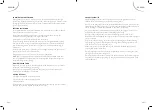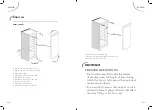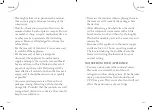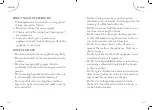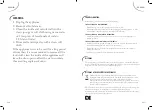
ENGLISH
ENGLISH
GB-15
GB-14
• This might allow air to penetrate the cabinet,
thus encouraging continuous running of the
compressor.
• Thin frost formation is quite soft and can be
removed with a brush or plastic scraper. Do not
use metal or sharp scrapers, mechanical devices
or other means to accelerate the defrosting
process. Remove all dislodged frost from the
cabinet floor.
• For the removal of thin frost it is not necessary
to switch off the appliance.
• For the removal of heavy ice deposits
disconnect the appliance from the mains
supply and empty the contents into cardboard
boxes and wrap in thick blankets or layers of
paper to keep them cold. Defrosting will be
most effective if carried out when the freezer is
empty, and it should be carried out as quickly
as possible.
• An increase in temperature of frozen food
packages during defrosting will shorten the
storage life. Provided that the contents are well
wrapped and placed in a cool area, they should
keep for several hours.
• Examine the contents when replacing them in
the freezer and if some of the packages have
thawed out.
• After defrosting is finished clean the inside
with a solution of warm water with a little
bicarbonate of soda and then dry thoroughly.
Wash all removable parts in the same way and
reassemble.
• Reconnect the appliance to the mains supply
and leave for 2 to 3 hours on setting number
7 before introducing the food back into the
freezer and setting the thermostat to your
normal setting.
NOISE FROM YOUR APPLIANCE
• You may notice some rather unusual noises.
The noises are caused by circulation of
refrigerant in the cooling system. It has become
more pronounced since the introduction of
CFC free gases. This is not a fault and will not
affect the performance of your fridge.
Содержание K4266
Страница 1: ......













